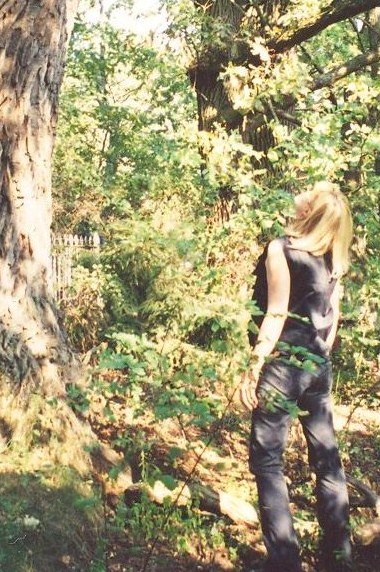This bleak photo was taken by Richard Wilson in the winter of 1987 and it is it is how I imagined the zone when I moved to still-Soviet Ukraine in 1991 -- like a giant radioactive parking lot north of Kiev; dead, like a moonscape.
When I finally did go in 1996, I was shocked to find that the lifeless radioactive desert I imagined had actually become a wildlife sanctuary the size of Rhode Island. Nature proved more resilient than anyone had thought. Today, more than 95% of the radionuclides are no longer on surfaces but a few inches deep in the ground. Radiation is no longer "on" the zone but "of" the zone. It is part of the food chain.
Note the radiation symbol at the bottom. This is a nuclear waste dump.
The Pripyat swamps are Europe's largest wetlands, though the Soviets drained them for agriculture. But when 135,000 people were permanently evacuated from the 18 mile zone around the reactor -- almost exactly the same number that had been living within 18 miles of Fukushima before the disaster -- the lands started returning to their primordial state. After many years, the vast majority of radionuclides are fixed inches deep in the waterways' sediments.
This pine is displaying radiomorphism, a change of shape due to radiation. Instead of growing straight up with branches perpendicular to the trunk, the radiation disorients the pine, which grows more like a bush. Radiomorphism was common in the early years, when radiation levels were higher all around the zone. Now, you'll only find it in the so-called Red Forest, which sits atop the western lobe of very radioactive debris from the initial explosion, and also atop radioactive waste that was just bulldozed into the ground, without any containment.
Some plants especially concentrate radionuclides, such as moss, which takes its nutrients from the air and the radioactive dust that kicks up on windy days. Mushrooms are also very radioactive because their mycelia are like sponges in the most contaminated layers of soil.
Pripyat, the Chernobyl plant's company town, was located less than two miles away. It was billed as the "youngest city on the planet" but it was surely its shortest lived.
Pripyat's 45,000 residents were evacuated on April 28. They were told it was for three days. It turned out to be forever. Prypiat.com is a website that brings together the city's former residents.
(Note: You can view every article as one long page if you sign up as an Advocate Member, or higher).













